The California High-Speed Rail project aims to literally put passenger rail transport in the Golden State of the USA back on track. Exceptional architecture is expected to play a crucial role in this effort. Four stations of the project have been designed by Foster + Partners, Arup, and Page & Turnbull.
Europe is known for its dense rail network, which connects the continent via high-speed and night trains. Despite occasional criticism, it largely operates reliably and efficiently. In the United States, the situation is quite different. Once the world’s leading rail nation until the 1960s, the country’s rail infrastructure has changed dramatically over the past few decades. In the vast nation spanning nearly ten million square kilometers, there is currently only one high-speed rail service: the Acela Express. However, instead of spanning the country from coast to coast, it covers just about 700 kilometers, running between Washington, D.C., and Boston at speeds of up to 240 km/h.
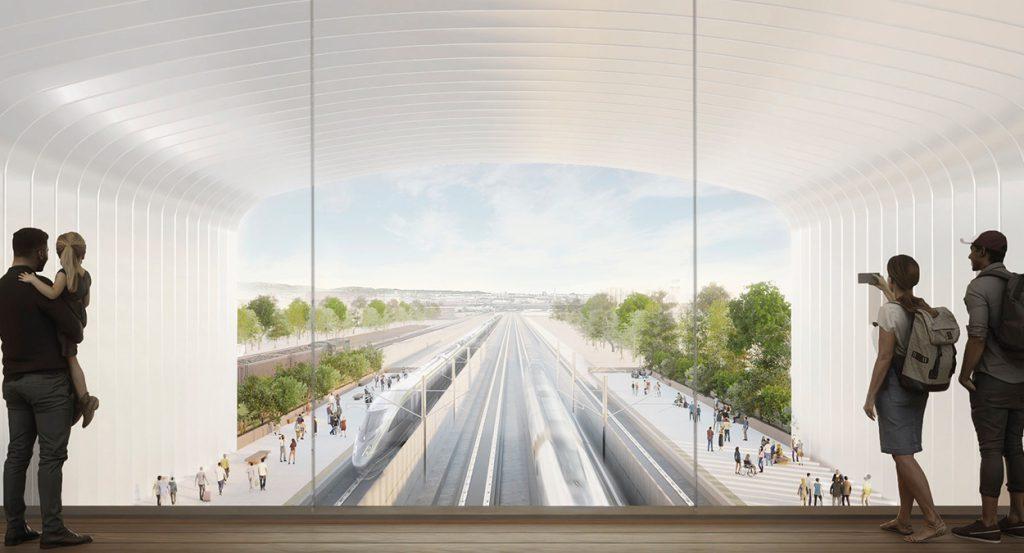
The majority of train traffic in the U.S. is dedicated to freight transport, but recent efforts have been made to expand passenger services. Several high-speed rail projects are in the planning stages or under construction. One of these is the California High-Speed Rail project, which aims to connect Los Angeles and San Francisco in less than three hours along a 500-kilometer route. For comparison, driving the same distance currently takes about six and a half hours.
Key Stations
The first four stations of the project will be built in California’s Central Valley, north of Los Angeles, in the cities of Bakersfield, Merced, and Fresno, as well as at the border of Kings and Tulare counties. The architectural masters at Foster + Partners have been commissioned for the project, working in collaboration with London-based Arup and San Francisco’s Page & Turnbull.
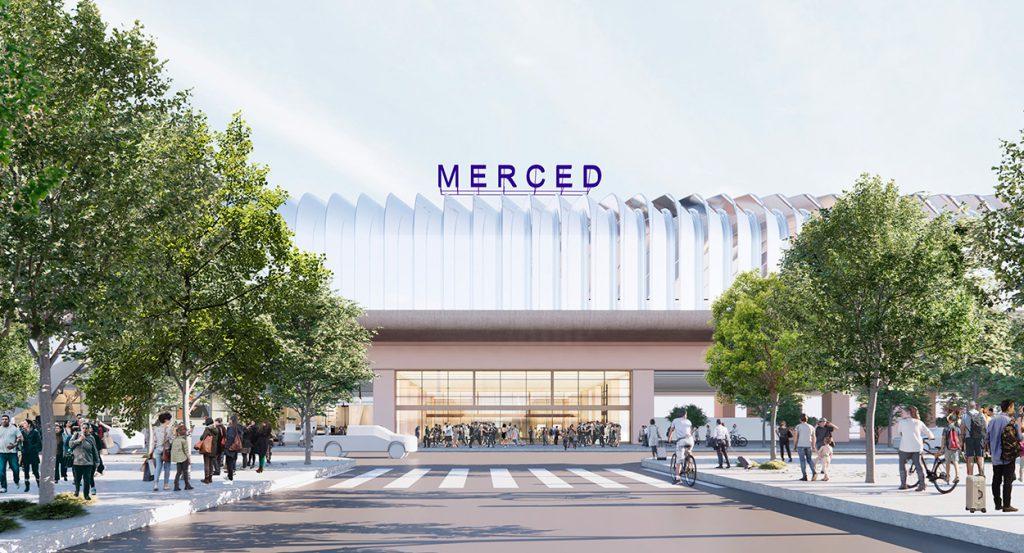
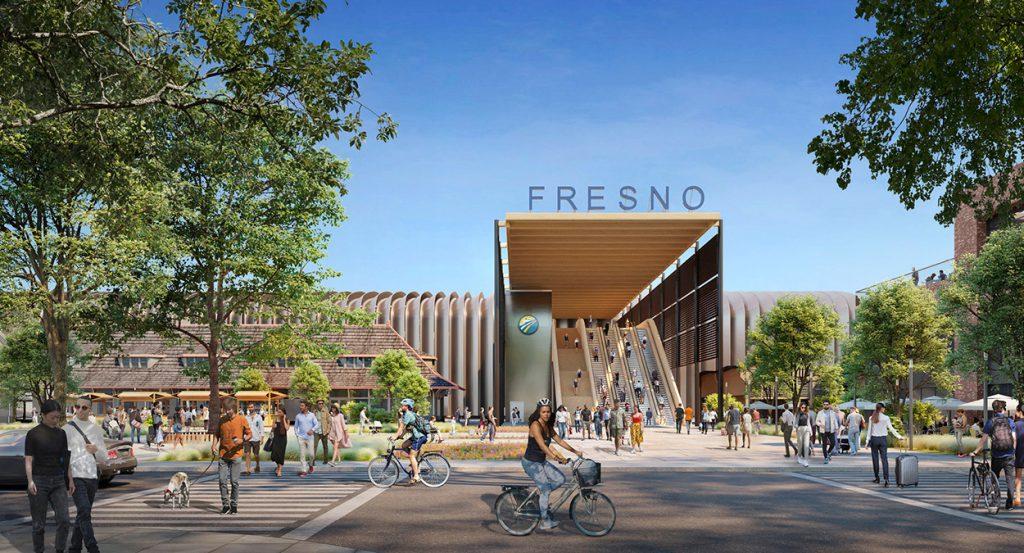
David Summerfield, co-head of architecture at Foster + Partners, describes the project as “a transformative initiative that reconnects communities across California and brings enormous environmental benefits to the entire country.” The goal is to remove half a million cars from the roads each year.
Beyond their function as transit hubs, these new stations will significantly contribute to urban design. In Merced, for example, a new pedestrian bridge will be built over the tracks, which currently divide the city in two. This will connect downtown directly to the station, which is set to become a central gathering place with a redesigned plaza.
Bridging Gaps
A similar concept is planned for Fresno, where an elevated walkway will link Chinatown to downtown, making the neighborhood more accessible to pedestrians. According to Foster + Partners, the bridge will serve as “a catalyst for future economic growth and investment in Chinatown.”
The station’s surrounding area will also be revitalized with thoughtful urban design, enhancing Fresno’s public spaces. Additionally, the city’s historic train station will be restored as part of the new construction.
Outside Hanford, the Kings/Tulare station will be built, providing passengers with convenient access via bus, car, or bicycle. The station’s platforms and expansive roof will be elevated above the building, which will be seamlessly connected to a new public plaza.
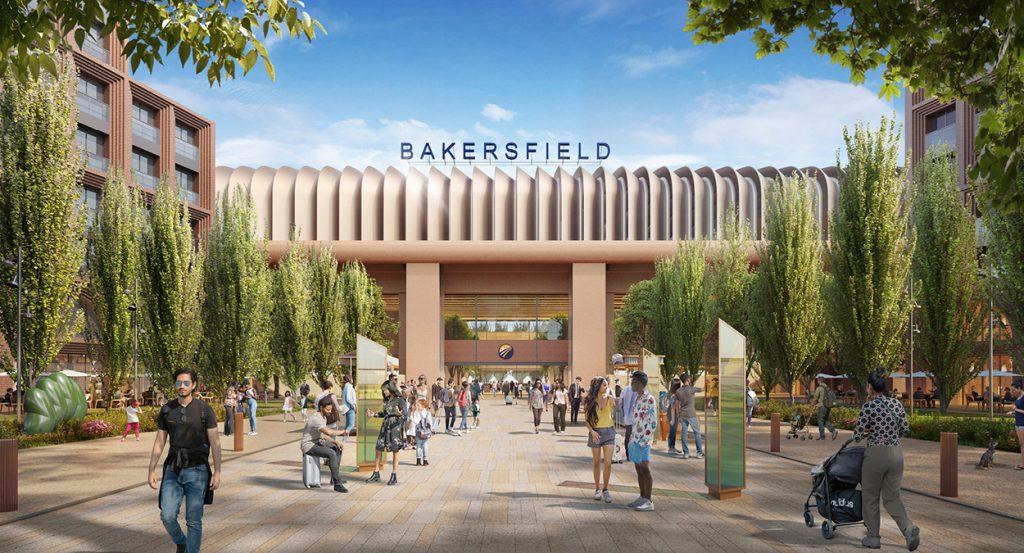
The Bakersfield station, the southernmost in the Central Valley, will serve as a future transportation hub connecting to Los Angeles and Anaheim. Nestled within a park that runs beneath the tracks, the station will directly link downtown Bakersfield with the Kern River, which flows through the city, and a newly developed recreational area. Urban development plans already envision further expansions of this redesigned space.
Sustainable Design
One key element uniting all four stations is their commitment to sustainability. Their design incorporates large canopies with extended overhangs to provide ample shade.
Let’s hope that these stations themselves don’t end up living in the shadows.
After all, they are not meant to be the only ones—up to 24 stations are planned along the high-speed rail route. However, the idea for this project was first introduced in 1979, with funding only approved in 2008. Since then, the project has faced repeated setbacks and controversies. Currently, operations in California’s Central Valley are scheduled to begin in 2030.
Text: Resi Reiner, Michi Reichelt
Fotos: Foster + Partners
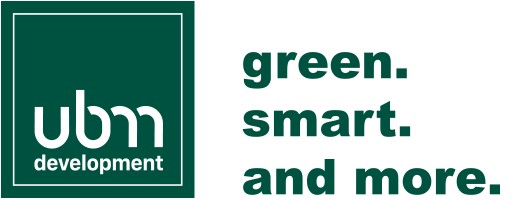
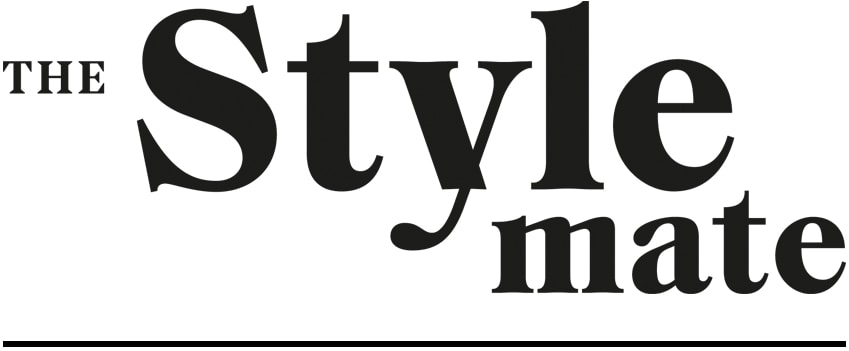
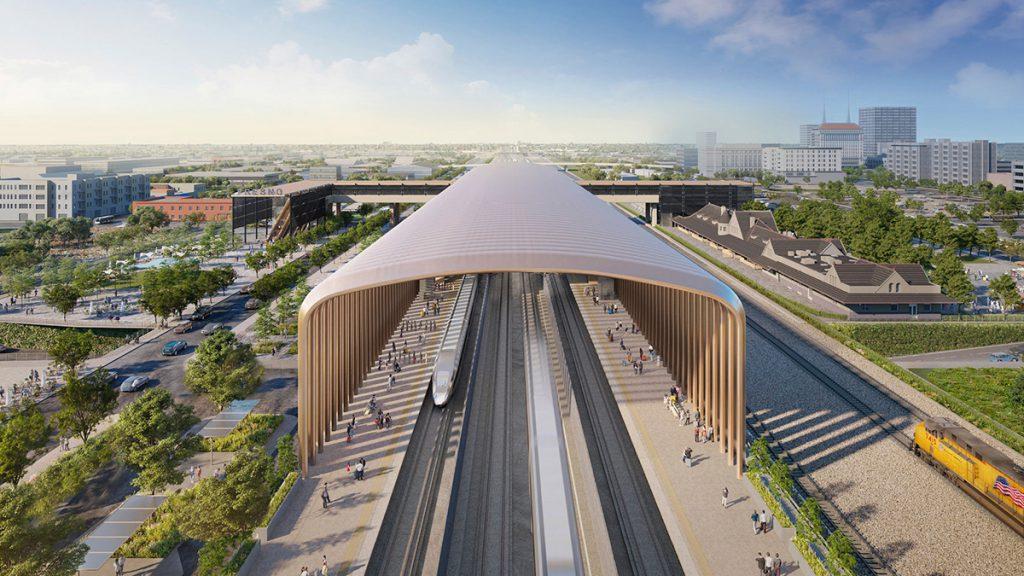
iThere are no comments
Add yours